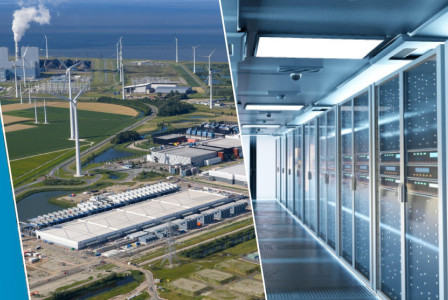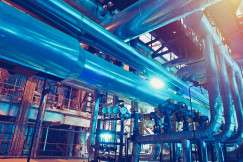News & articles
19 November 2025
In focus: Data centres – an energy-hungry challenge
News & articles
19 November 2025
Digital transition
Green transition
Login / create an account to be able to react
-
2

Data centres are a vital infrastructure supporting our ever-growing use of cloud storage, social media, AI, streaming services and more.
They’re also an increasingly hot topic of the clean transition, as they consume significant amounts of energy.
Editorial team
European Commission
Topics
Albania
Armenia
Austria
Belgium
Bosnia and Herzegovina
Bulgaria
Croatia
Cyprus
Czechia
Denmark
Estonia
EU-27
Finland
France
Georgia
Germany
Greece
Hungary
Iceland
Ireland
Italy
Kosovo
Latvia
Liechtenstein
Lithuania
Luxembourg
Malta
Moldova
Montenegro
Netherlands
North Macedonia
Norway
Poland
Portugal
Romania
Serbia
Slovakia
Slovenia
Spain
Sweden
Switzerland
Türkiye
Ukraine
Other
EU Institutions
-
Policy type
-
-
Digital transition
-
Green transition
-
Share
How much energy do data centres consume?
According to the International Energy Agency (IEA), data centres are responsible for about 1.5%, or 415 Terawatt-Hours (TWh), of the world's total yearly electricity consumption. This has grown by 12% per year over the last 5 years and projections indicate that it is on course to more than double towards 945 TWh by 2030, primarily due to the substantial growth of energy-intensive accelerated computing which is used mainly for AI purposes.
Looking at the EU specifically, in the absence of precise consumption data (a challenge which the EU is addressing - we’ll come back to that later in the article!), the IEA estimates that the energy use of data centres in 2024 was 70 TWh. Consistent with the global trend, a significant increase is expected in the coming years – towards 115 TWh by 2030.
What does this mean for the energy sector?
In the context of our efforts to use energy more efficiently, the rising energy consumption of data centres is certainly challenging.
EU countries are working towards an ambitious energy efficiency target of reducing final energy consumption by at least 11.7% by 2030, compared to the 2020 projections for energy use in 2030. At international level, the EU has been instrumental in spear-heading the global pledge to double the rate of energy efficiency improvements worldwide, from about 2% to over 4% by 2030 – along with tripling the world’s installed capacity of renewable energy sources.
Particularly challenging for the energy system is the rate at which data centres – and thus their energy needs – are increasing, and the fact that this increase is usually met with a lack of available capacity to connect to the grid.
Comments (0)
See also
2025 State of the Union Address by President von der Leyen
- Categories
- Digital transition EU Policy Green transition
Commission unveils 2026 work programme
- Categories
- Digital transition EU Policy Green transition
Von der Leyen urges Europe to stand united and strengthen its defense in SOTEU 2025
- Categories
- Digital transition EU Policy Green transition




